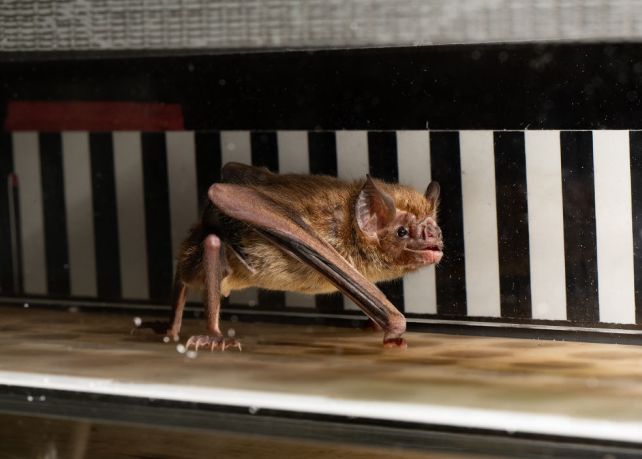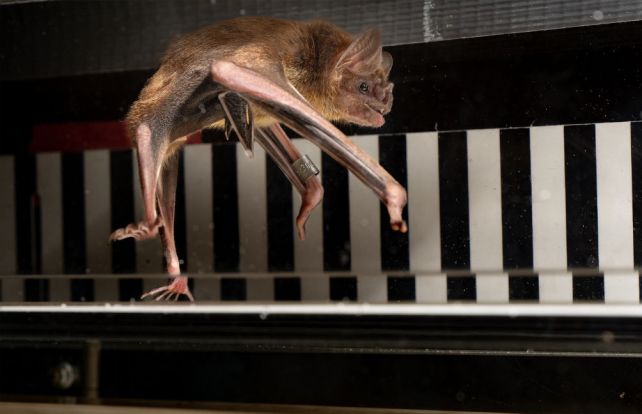[ad_1]
If you’ve ever thought to yourself, “Gee I sure would like to see some vampire bats on treadmills,” then do we have the science for you. That’s exactly what a team of scientists has done, and it’s not because little Vladi needed to get his chiropteran steps in.
Rather, the new research reveals how vampire bats (Desmodus rotundus) make the most out of their primary food source – the blood they slurp from the mammals on which they feed.
Fascinatingly, the results show an aptitude for the metabolism of the amino acids in the blood they eat. And, moreover, it doesn’t take them long to do so. A vampire bat can gallop merrily along, fuelled by a meal of blood consumed only minutes before.

This makes the vampire bat a very unusual animal indeed, since most vertebrates rely primarily on the metabolism of carbohydrates and lipids for energy. But the ability does appear elsewhere in the animal kingdom – in invertebrate animals, such as blood-feeding Tsetse flies.
It’s well established that, among mammals, low-intensity aerobic exercise is predominantly fueled by lipids. As the exercise intensity increases, so too does the reliance on carbohydrates as fuel. These fuel sources are oxidized to generate adenosine triphosphate (ATP), the molecule that provides energy to living cells.
How exactly a vampire bat generates ATP from their extremely protein-rich diet was unclear. But physiologists Giulia Rossi of the University of Toronto and Kenneth Welch of McMaster University in Canada realized they could make use of a trait of vampire bats to find out.
Unlike other bat species, vampire bats are very good at running along the ground. So, they figured they could put bats in treadmills that measure their oxygen intake and carbon dioxide output to measure their metabolism as they exercise at different intensities. And, with the bats living temporarily in the lab, the researchers could control their food intake to determine how that metabolism was working.
https://www.youtube.com/watch?v=SM5ArFuUnW4
They caught 24 wild adult vampire bats in Belize, and divided them into groups. One group of nine bats was fed cow’s blood enriched with leucine, an essential amino acid (one that mammals can’t synthesize) that helps build and repair muscles in humans. A second group of 12 bats was fed cow’s blood enriched with glycine, a non-essential amino acid that helps build collagen and acts as a neurotransmitter.
By swapping the ordinary carbons in the amino acids for a relatively unique isotope, they could track what happened to the element as the compounds broke down in the bats’ bodies.
The remaining group was fed cow’s blood that was not enhanced with amino acids, to provide a baseline for the CO2 production of an exercising bat.
After feeding, each bat was popped on the treadmill, custom-built for this research. There were three exercise intensities; 10 meters (33 feet) per minute, 20 meters per minute, and 30 meters per minute. The treadmill gradually increased to each target speed, and the bat’s breath recorded as it scampered along the conveyor belt. At top speed, there were even little airborne hops.
Once the bats had been put through their paces, the researchers analyzed the rate at which oxygen was consumed, and carbon dioxide produced, the ratio of which is routinely used as an indicator of metabolic fuel use.
The isotopes revealed the production of CO2 from the metabolization of amino acids was almost immediately present in the breath of bats on the treadmill. This suggests that the animals were rapidly and efficiently making use of their recent protein meals, unlike insects such as mosquitoes which take longer to metabolize the amino acids in the blood on which they feed.

Interestingly, the bats fed the enriched blood showed no discrimination between essential and non-essential amino acids. Their little bodies made the most of the resources provided, whatever those resources were.
“Our findings suggest that major enhancement of flux through these and related metabolic pathways have evolved in vampire bats as an adaptation to make efficient use of those fuels ingested in abundance (i.e. blood proteins and amino acids),” the researchers write, “marking a striking example of convergent evolution among both vertebrate and invertebrate obligate blood-feeding animals.”
No bats were harmed in the making of this research. They may, however, have been a little more in shape upon their release back into the wild.
[ad_2]
